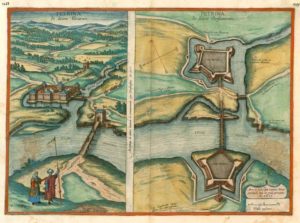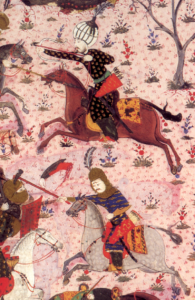The Long War, Part Three / how it broke out
The prelude to the war
We have to tell how Erdődy Tamás aka Toma Bakač Erdedi was defeated at Petrinja on 19 July 1592. As it was, Pasha Hasszán Telli (Deli) of Bosnia had launched several bigger assaults in 1591 against the Croatian part of the Borderland. The number of his army has been quite larger than a usual raiding unit and he has also brought cannons along. Violating the Truce of Edirne, he had taken several castles.





The first stage of the war

Begler Bey Telli Hasszán of Bosnia had a fixed idea, he wanted to take Sziszek / Sisak Castle which is 48 km from Zagreb as the bird flies. He launched his third attack against the Borderland of Hungary at the Croatian-Slavonian lands in June 1593. His main objective, like in 1591, was taking this important Borderland fort at the swampy confluence of the Száva and the Kupa, and the Odra rivers. Although he could not take it during the previous year, he did occupy another fort, Bihács / Bihac Castle that inspired him. As we could see, he had already beaten the army of Bán (Duke) Erdődy Tamás and hastily built a palisade fort at Petrija.
According to the report written by Eggenberg Rupprecht on 24 June 1593 to Prince Ernő, the Bey’s army consisted of the following troops:
Hasszán, Pasha of Bosnia had 4,000 cavalrymen and infantrymen;
Bey Ferhád, 1,000 men,
Bey Opardi of Klissza, 3,000 men,
Bey Meszni, 2,500 men,
Bey Zeffár of Szvornik, the brother of the Pasha of Bosnia, 700 men,
Bey Mehemed of Hercegovina, 3,000 men,
Bey Kurd, son of Pasha Ferhád, 1,500 men,
Bey Rusztán of Petrinja, 500 men,
Bey Ibrahim of Likka, 2,000 men,
The Captain of Gradiska had 1,000 men, additionally 2,000 Sipahi and numerous Akindji and 9 larger cannons.” (Source: Bánlaky József)

The Pasha besieged the fort with about 15,000-22,000 men and had the walls bombarded for 10 days. As a rule, the Muslims and Christians raged the small war during the Truce with smaller armies, and cannons were forbidden. Now, it was a great violation of these “unwritten” rules. At the same time, in Sziszek, there were only 100 German mercenaries and a couple hundred armed burghers and peasants. They were desperately waiting for the reinforcement to arrive.

The siege has come to an end when the Christian reinforcement arrived led by the Croatian-Slavonian Bán (Duke) Tamás Erdődy and Chief Captain Andreas Auersperg of Károlyváros Castle, along with Imperial Colonel Rupprecht Eggerberg, altogether 5,000 soldiers. The Pasha was utterly surprised; he had his army deployed in a peninsula on 22 June, their back pointing at the river. Thus, he got caught between two fires because the defenders of the castle were threatening his back and he had only a narrow wooden bridge for withdrawal. The assaults of Erdődy and Eggenberg along with the fierce cannon fire pushed the Turks back and made them flee.
They tried to get to the opposite bank through the narrow bridge, trampling each other to death. The Christians slaughtered most of them or pushed them into the Kulpa River. The 80-year-old Pasha Hasszán was killed, too, and most of his army was destroyed. According to the mildest Christian guesses, 16,000 of them were slaughtered. Six large cannons were taken from the Ottomans, along with many smaller caliber cannons. The victors took 30 ships, full of food and valuable things, too, according to the Chronicle of Baranyai Decsi János.
It was a great shame for the Sultan and it was Grand Vizier Sinan who gained control in the debate of the Divan where the Pashas were discussing the situation. As a result of this, they declared war against Emperor Rudolf on 4 July. By the way, it was the son of Sinan, Szinánpasazáde Mehmed who managed to take Sziszek Castle a few weeks later.

The battle of Sziszek was painted by Hans Rudolf Miller on the celebration hall`s ceiling of the Ferenc Nádasdy Museum (1653).
You can read more about the Castle of Sziszek / Sisak here:
https://www.hungarianottomanwars.com/kingdom-of-hungary/sziszek/
Dear Readers, I can only make this content available through small donations or by selling my books or T-shirts.
If you like my writings, please feel free to support me with a coffee here:
You can check out my books on Amazon or Draft2Digital, they are available in hardcover, paperback, or ebook:
https://www.amazon.com/dp/198020490X
or at https://books2read.com/b/boYd81


My work can also be followed and supported on Patreon: Become a Patron!http://Become a Patron!


